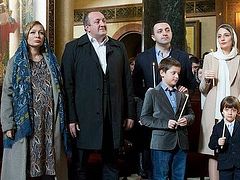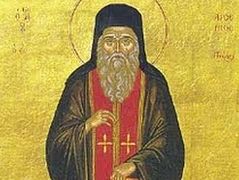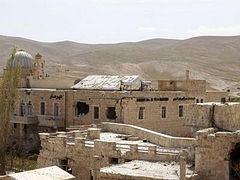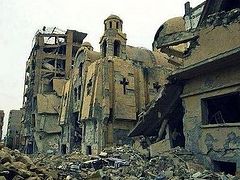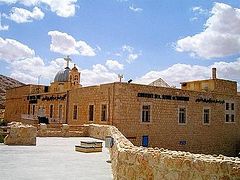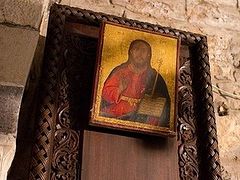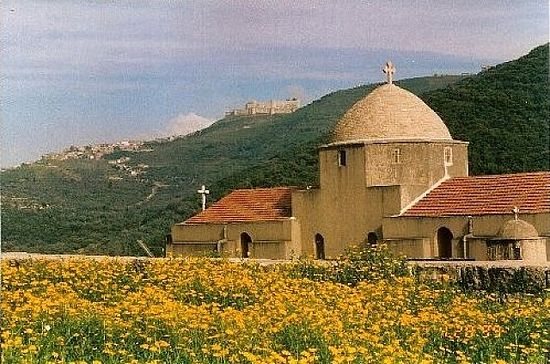 St. George Monastery, Syria. Photo: OrthPhoto.
St. George Monastery, Syria. Photo: OrthPhoto. The monastery of St. George is located in Wadi-An-Nadara, or the “alley of Christians”, in the region of Tal-Kalah, sixty-five kilometers from Homs, Syria. It lies on the ancient Roman road that joins the coastal cities with the east, between Homs and Tripoli, near the famous Crusaders castle, Krak de Chevalier.
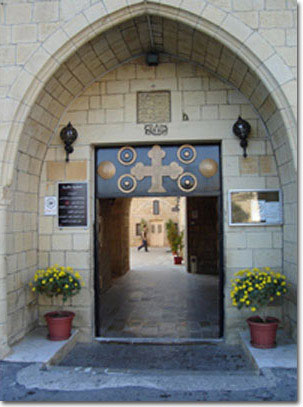 Photo: ComeToSyria.com.
Photo: ComeToSyria.com. According to another version, the word Humaira is the Arab transcription of the Greek word “homiros”, which means “spiritual brotherhood of common life.”
The monastery of St. George was built on a Roman civic road that connected the coastal lands with the internal cities of Homs, Palmira, and others located deeper in the desert.
The original monastery was a cave surrounded by the cells of pious monks. The main entrance from the southern side was adorned with a Byzantine façade. The gates were 93 x 64 centimeters, built around with black stone.
Next to the gates was a stone window used for distributing bread and other foods to the needy. One of the educated monks would instruct people in the Orthodox faith and morals through this window.
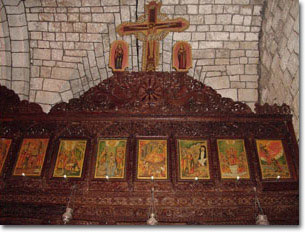 Iconostasis in the Old Church. Photo: ComeToSyria.com.
Iconostasis in the Old Church. Photo: ComeToSyria.com. 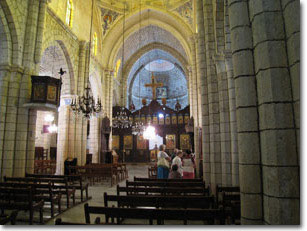 The New Church. Photo: ComeToSyria.com.
The New Church. Photo: ComeToSyria.com. In the monastery vestry can be seen potirs, trays, crosses, and other unique utensils—a priceless Christian inheritance. Among them are many manuscripts, documents, wills, and gift charters from the time of Arab domination, as well as gifts from Armenian, Georgian, and Russia rulers. The monastery is included in the list of the most important monuments of Syria. Together with the Knights’ Castle, the locality is a popular tourist attraction. People of various races and religions visit the monastery and piously bring offerings, honoring the patron saint, Great Martyr George, with thanks for the many miracles wrought through him.
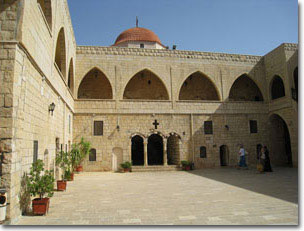 Photo: ComeToSyria.com.
Photo: ComeToSyria.com. The current civil war in Syria has placed the St. George Monastery in danger. At the end of August, 2013, armed extremists attacked the monastery, but were met with resistance from volunteers of the People’s Defense Forces. Eleven Christian soldiers were killed defending the monastery, while the extremists were forced to retreat to the area of the Krak de Chevaliers castle, and did not succeed in desecrating the monastery.
During Holy Week of this year (2014), a school located just a few minutes walk from the monastery received a mortar attack, which killed several children and wounded dozens.
For many years, the present Patriarch of the Orthodox Church of Antioch John X (Yazigi) was abbot of the St. George Monastery in Humaira. His brother, Metropolitan Paul (Yazigi) of Aleppo was kidnapped on April 22 in the north of Syria while on a humanitarian mission together with a companion, the Syriac Metropolitan Johanna Ibrahim. The fate of the two hierarchs is still unknown.

